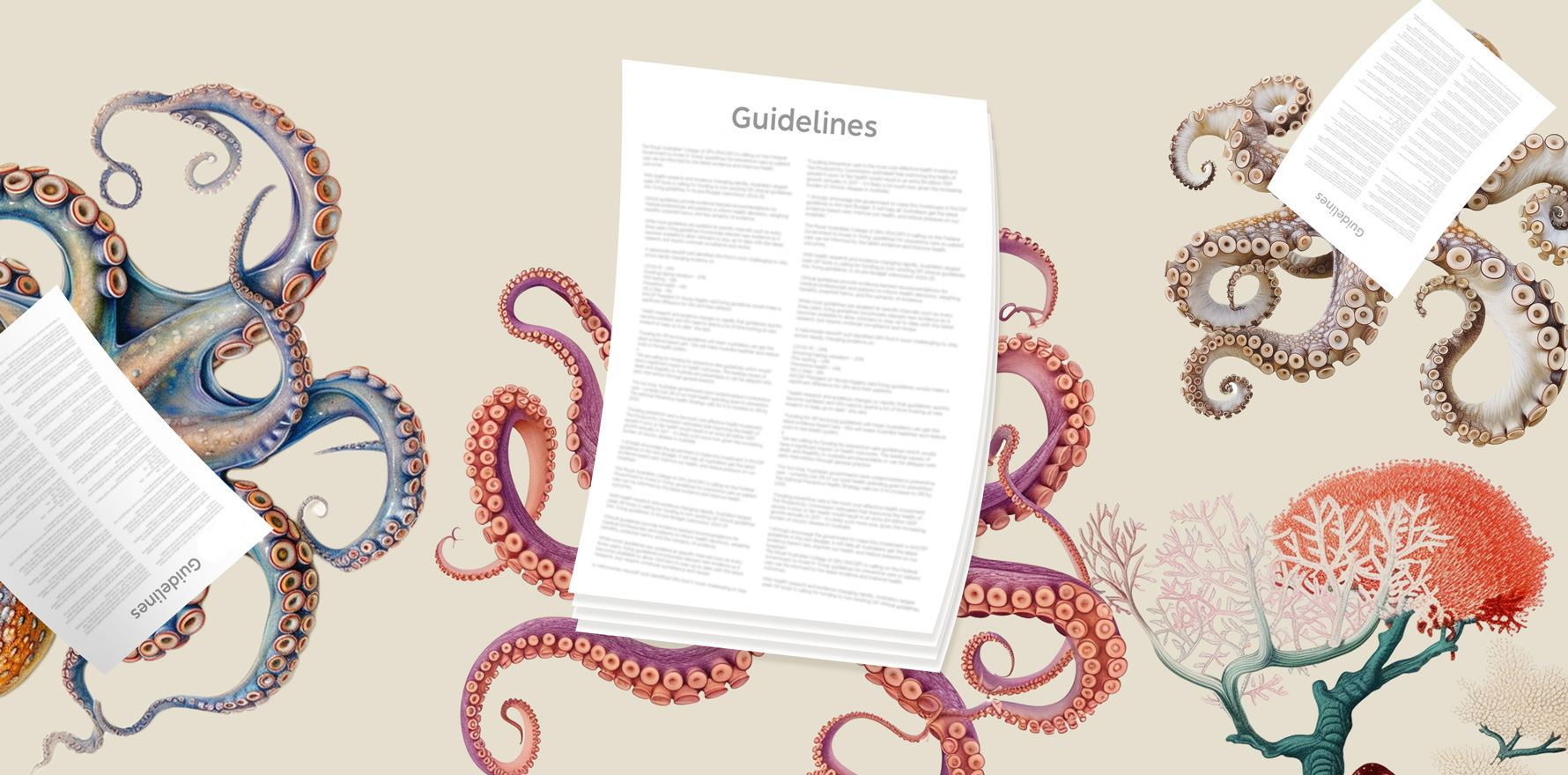These documents would ideally be updated every three to six months, as opposed to the six-year gap since the last Red Book update.
In the third and final instalment of the RACGP’s pre-budget submission, the college has called for $330,000 of federal funding to bring its guidelines to life.
Speaking to The Medical Republic, chair of the RACGP’s expert committee in quality care Professor Mark Morgan said that due to the rapid rate of change in medical knowledge, currently estimated to double every 73 days according to the RACGP’s submission, “things become out of date much faster”.
Outdated guidelines mean “GPs need to spend a lot of time looking at new research to keep up to date”, added RACGP president Dr Nicole Higgins.
“Funding for GP-led living guidelines will mean Australians can get the latest evidence-based care – this will make Australia healthier and reduce costs to the health system,” she said.
Professor Morgan added that the relatively small investment in preventative care that GPs offer, around 2% of the health budget, results in “huge” savings.
“It’s a relatively small price to pay for a critical piece of health infrastructure.”
In fact, “the Productivity Commission estimated that improving the health of people in poor or fair health would result in an extra $4 billion GDP growth annually in 2017 – it’s likely a lot more now, given the increasing burden of chronic disease in Australia”, said Dr Higgins.
Currently, the RACGP’s clinical practice guidelines are mostly funded by membership fees, said Professor Morgan.
“Some of them are updated in partnership with other organisations that have an aligned need for guidelines.
“And a few of them are commissioned by a government funding body, but we’ve not done that recently.”
While the college hoped to update its clinical practice guidelines every three or four years, the nature of this “mammoth task” meant that has not been the case, said Professor Morgan.
The last edition of the Guidelines for Preventive Activities in General Practice (the Red Book) was published in 2016 and updated in 2018.
According to Professor Morgan, the 10th edition is due to be released around April this year.
In its submission, the RACGP called for investment from the federal government over the next three years to bring the following guidelines to life:
- Guidelines for Preventive Activities in General Practice (Red Book)
- Green book – Putting prevention into practice
- Handbook of Non-Drug Interventions
- First do no Harm: A guide to choosing wisely in general practice
- Prevention and chronic disease management – Management of type 2 diabetes: a handbook for general
Related
Professor Morgan said that these “living guidelines” would ideally be updated “every three to six months, with an evidence-scanning system that runs fairly frequently looking for significant new evidence that could change recommendations”.
The guidelines would likely involve the work of two groups of people: a research group to gather and present new evidence and a standing committee of GPs and other stakeholders to decipher whether recommendations need to be changed based on the evidence presented.
“There’s quite a lot of nuanced decision making involved in a critical appraisal of research evidence and then to turn that into a recommendation.”
The RACGP’s guidelines focus on preventive health, an area that has been subject to continuous underinvested, despite being the “most cost-effective health investment”, said Dr Higgins.
“The leading causes of death and disability in Australia are preventable or can be delayed with early intervention through general practice.
“Currently just 2% of our total health spending goes to prevention.
“The National Preventive Health Strategy calls for it to increase to 5% by 2030.”
Dr Higgins encouraged the government to invest in these guidelines in the upcoming budget.
“It will help all Australians get the latest evidence-based care, improve our health, and reduce pressure on our hospitals.”





